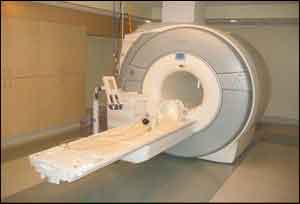- Home
- Editorial
- News
- Practice Guidelines
- Anesthesiology Guidelines
- Cancer Guidelines
- Cardiac Sciences Guidelines
- Critical Care Guidelines
- Dentistry Guidelines
- Dermatology Guidelines
- Diabetes and Endo Guidelines
- Diagnostics Guidelines
- ENT Guidelines
- Featured Practice Guidelines
- Gastroenterology Guidelines
- Geriatrics Guidelines
- Medicine Guidelines
- Nephrology Guidelines
- Neurosciences Guidelines
- Obs and Gynae Guidelines
- Ophthalmology Guidelines
- Orthopaedics Guidelines
- Paediatrics Guidelines
- Psychiatry Guidelines
- Pulmonology Guidelines
- Radiology Guidelines
- Surgery Guidelines
- Urology Guidelines
New MRI technique that detects breast cancer without a contrast

Dr.Sebastian Bickelhaupt of German Cancer Research Center in Heidelberg, Germany and colleagues a new technique known as diffusion kurtosis imaging which provides a picture of breast tissue on a microstructural level.This is an alternative approach that eliminates the need for contrast agents in some cases by using diffusion-weighted imaging (DWI) measurements derived from MRI.The new MRI technique combined with sophisticated data analysis can detect breast cancer without a contrast technique and reduce the number of unnecessary breast biopsies.The findings of study has been published online in the journal Radiology.
Breast MRI currently is used to screen women at high risk of breast cancer and as a diagnostic adjunct to mammography. The examination relies on gadolinium-based contrast agents that need to be injected intravenously.
Researchers recently studied an alternative approach that eliminates the need for contrast agents in some cases by using diffusion-weighted imaging (DWI) measurements derived from MRI. The technique, known as diffusion kurtosis imaging, provides a picture of breast tissue on a microstructural level.
"Diffusion kurtosis imaging has been introduced in DWI to provide important information on tissue structures at a microscopic level," said study lead author Sebastian Bickelhaupt, M.D., from the German Cancer Research Center in Heidelberg, Germany. "Since malignant lesions disrupt the tissue structures at this level, diffusion kurtosis might serve as a relevant marker of changes."
Dr. Bickelhaupt, co-lead author Paul Jaeger, M.Sc., and colleagues evaluated a retrospective analysis of data collected from 222 women at two independent study sites. The women had suspicious findings on mammography that were classified under the Breast Imaging Reporting and Data System (BI-RADS) as BI-RADS 4 and 5 breast lesions. A BI-RADS 4 lesion is considered a suspicious abnormality, while a 5 is considered highly suspicious of malignancy. The women underwent DWI followed by biopsy.
For the analysis, a software algorithm was developed for lesion characterization, and imaging features were extracted using a kurtosis-based radiomics model. Radiomics is a rapidly growing field that enables the extraction of a large amount of quantifiable data from images.
In an independent test set of 127 women, the radiomics analysis reduced false-positive findings by 70 percent, while detecting 60 of 61 malignant lesions, or 98 percent.
"The model might help to lower the number of BI-RADS 4 lesions suspected of being cancer on the basis of screening mammography while retaining a high sensitivity similar to the sensitivity reported for biopsies themselves," Jaeger said.
Should the results hold in larger trials, the model has potential advantages in the clinic beyond its ability to reduce unnecessary biopsies in women with BI-RADS 4 lesions. The software algorithm makes the assessment reader-independent, ensuring that its accuracy is maintained across different imaging facilities.
The new approach is not intended to replace current contrast-enhanced breast MRI protocols in general, Dr. Bickelhaupt emphasized, but to expand the spectrum of options available for answering specific clinical questions.
"This might also improve the efficiency of reporting," he said.

Disclaimer: This site is primarily intended for healthcare professionals. Any content/information on this website does not replace the advice of medical and/or health professionals and should not be construed as medical/diagnostic advice/endorsement or prescription. Use of this site is subject to our terms of use, privacy policy, advertisement policy. © 2020 Minerva Medical Treatment Pvt Ltd